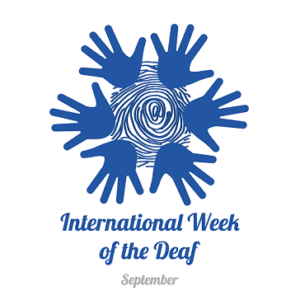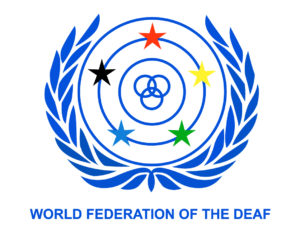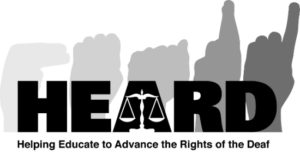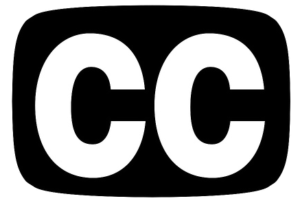LC Interpreting Services is now SignNexus!
International Week of the Deaf 2017: 5 Civil Rights Issues You Should Know About
 This week is International Week of the Deaf, a worldwide celebration of deafness, d/Deaf individuals, Deaf cultures, and signed languages which is held every year at the end of September. This year, the theme of the week is “Full Inclusion with Sign Language.”
This week is International Week of the Deaf, a worldwide celebration of deafness, d/Deaf individuals, Deaf cultures, and signed languages which is held every year at the end of September. This year, the theme of the week is “Full Inclusion with Sign Language.”
Global celebrations like International Week of the Deaf have a ripple effect when it comes to raising awareness. “Full Inclusion with Sign Language” is an important message, as those who are Deaf consider themselves to be a linguistic minority group, and they are very proud of their signed languages. Helping the hearing majority to recognize and appreciate the complexities signed languages can help bring the issues of reasonable accommodations and full inclusion to mainstream discussions.
To celebrate International Week of the Deaf, I wanted to highlight 5 major civil rights issues that Deaf advocates are actively working to address.
Access to Signed Language
Because 9 out of 10 deaf babies are born to hearing parents with no connection to the d/Deaf community, the first few months of a deaf child’s life can be confusing— for both the parents and the developing child. This is a critical window of time for cognitive development. This is a time when babies are learning so much about the world, and they need a language with which they can begin to frame it.
The National Association for the Deaf (NAD) takes a very strong and clear position on the topic of access to signed language, stating: “Deaf and hard of hearing children like all children have a right to language. Signed language, being a visual language, is the only completely accessible language for these children… Research has shown that thousands of deaf and hard of hearing children are experiencing various levels of language deprivation, many to an extent that constitutes harm in the form of educational, social-emotional and cognitive delays. For this reason, it is the position of the National Association of the Deaf that an all-out effort needs to be made to ensure that all deaf and hard of hearing children have full and meaningful access to language from birth and the benefit of visual language and visual learning.”
 NAD has established a Language Deprivation Taskforce to address the issue conscientiously. Deaf-led organizations like LEAD-K and the Nyle DiMarco Foundation are working to fill the gaps when it comes to educating and raising awareness on a community level.
NAD has established a Language Deprivation Taskforce to address the issue conscientiously. Deaf-led organizations like LEAD-K and the Nyle DiMarco Foundation are working to fill the gaps when it comes to educating and raising awareness on a community level.
Dr. Peter Hauser, a Clinical Neuropsychologist and associate professor at the National Technical Institute for the Deaf (NTID) at the Rochester Institute of Technology, has given numerous lectures and conducts ongoing research that makes a strong case for giving deaf children access to signed language. He even wrote book along with his esteemed colleague Dr. Marc Marshark called “How Deaf Children Learn.” Further underlining support of early access to signed language, NTID offers a FAQ on their site about Educating Deaf Children with answers from international experts.
Education
Piggybacking on the problems caused by delayed language acquisition, access to education is one of the biggest issues that the d/Deaf community seeks to address. So many young people who are deaf suffer, often without complaint, through years in an educational system that simply was not designed for them to succeed.

The World Federation of the Deaf (WFD) website explains: “Deaf children have the right to expect that their needs and human, linguistic and educational rights are respected and supported … Studies by the WFD reveal that the enrollment rate and literacy achievement of Deaf children is far below the average for the population at large. Illiteracy and semi-literacy are serious problems among Deaf people. Without appropriate education, advancement in society as an independent, employed, contributing citizen becomes problematic…. WFD takes the unequivocal position that there is no excuse for this deplorable situation, since Deaf children have the same innate intellectual, social and emotional capacities, as do all children.”
Access to a curriculum that makes sense for their abilities can determine the course of a deaf student’s future. Schools need to be prepared to offer captioning and high quality interpreting services for students who are deaf, as needed, and these costs need to be built into the budget right from the start.
Deaf leadership is proving to be a strong cornerstone for the slow but steady push toward equal learning opportunities. Organizations like LEAD-K, with the simple goal of creating generations of Kindergarten-ready Deaf children, have been instrumental in enacting public policy reform that shines a light on the inequality faced by deaf children when it comes to education. This continues to be a long and uphill battle.
Employment Opportunities
 Although the exact statistics can be a bit fuzzy, the indisputable fact remains: Unemployment is a problem that disproportionately impacts the d/Deaf community. Deaf individuals are unemployed at a significantly higher rate than the hearing population.
Although the exact statistics can be a bit fuzzy, the indisputable fact remains: Unemployment is a problem that disproportionately impacts the d/Deaf community. Deaf individuals are unemployed at a significantly higher rate than the hearing population.
From the interview process onward, discriminatory attitudes create barriers to career success. Employers might be afraid to hire a person who is deaf because they don’t understand how to open lines of communications and integrate this person onto the team; they may overlook a perfectly qualified deaf candidate in favor of a less qualified hearing person. Once they have been hired, typically deaf individuals are given little support, encouragement, or room for career advancement. Without satisfactory employment opportunities, the cycle of oppression just continues ad infinitum. It never ends.
Those who are d/Deaf deserve the same opportunities to build a life for themselves as everyone else, without being limited by a language barrier or limited by a lack of cultural awareness. Deaf activist groups have to advocate constantly for the basic human right to earn a livable income. In 2015, there was a march on Washington DC to raise awareness about deaf unemployment, and to demonstrate support for opening up better job opportunities.
To learn more about this topic, check out the following blogs:
– 6 Reasons to Hire Deaf Employees
– Hiring And Supporting Deaf Employees
– Creating Opportunities for Deaf Employees
Access to Justice
From initial encounters with police officers all the way to sentencing trials, the criminal justice system fails individuals who are deaf time and time again.
For those who are unable to hear, dealing with police officers can be unnerving, it can be humiliating, and in some cases, it can be deadly. Interacting with authorities within the legal system who refuse to provide adequate accommodations can lead to misunderstandings that could mean the difference between a witness statement and a coerced confession. Deaf people get accused of noncompliance because they do not hear police orders, or they are deemed a threat for using their hands to communicate in ASL. These situations escalate so frequently, in fact, that the ACLU teamed up with Academy Award winning deaf actress Marlee Matlin to create a video designed to empower deaf individuals to advocate for their legal rights when interacting with law enforcement.

According to civil rights advocacy group Helping Educate to Advance the Rights of the Deaf (HEARD), “There are tens of thousands of deaf people in jails and prisons across the nation. Most departments of corrections do not track numbers or locations of deaf prisoners.” Lost within the prison system, some of these individuals slip through the cracks for years, sometimes their entire lives, serving sentences for crimes they may not have committed without ever having access to a fair trial or the kind of support they would need to build a defense case. Many d/Deaf prisoners can not even make phone calls due to woefully outdated telecommunications systems.
Once they are in jail, deaf prisoners can easily be overlooked for medical or mental health care services, or they might be denied service because they are not able to communicate their needs effectively. Or even worse, these prisoners get taken advantage of and abused because they do not have the ability nor the resources to advocate for themselves from such a disempowered position.
Things don’t get easier once people are returned to citizen life, with the combination of a disability and a criminal record it can be nearly impossible to find decent work. Without equal access to justice at every s
tep along the way, the entire system continues to uphold the oppression of marginalized people.
– NAD Law and Advocacy Center
– Center for American Progress: Disabled Behind Bars
Inadequate Services
If there is any lesson to be learned from the several highly publicized “fake interpreter” incidents over the past few years, it is that deaf individuals are provided inadequate sign language interpreters on a regular basis. If subpar interpreters are being assigned to interpret major televised events, do you suppose these interpreters are also being sent to doctors appointments and parent teacher conferences?

Just turn on the local news with the closed captioning, you will quickly witness how live captioning can be almost hilariously inaccurate (or in the case of an emergency, dangerously inaccurate). And, as the “No More Craptions” campaign points out, accessibility for internet content is even worse. The bottom line here is that people who are deaf— when they actually do receive “access” to the communication services they need— are often still being denied an equal experience.
With regards to interpreting services, unfortunately, some organizations just hire the cheapest interpreting agency they can find, and this agency might not even have anyone who is fluent in ASL screening the interpreters before they are sent out on assignment. These unqualified interpreters serve as yet another communication barrier for the deaf consumer, and they might even dramatically impact or endanger the person’s life. At the end of the day, effective communication is not being offered, which is a violation of the ADA.
 In 2004, RID and NAD implemented a joint Code of Professional Ethics for all members and certified interpreters. RID has established an interpreter certification program to to help maintain a high level of excellence, and the organization provides a support network for constant professional development. Although these efforts are slowly improving service for deaf consumers, they have sadly not prevented unqualified interpreters from getting work.
In 2004, RID and NAD implemented a joint Code of Professional Ethics for all members and certified interpreters. RID has established an interpreter certification program to to help maintain a high level of excellence, and the organization provides a support network for constant professional development. Although these efforts are slowly improving service for deaf consumers, they have sadly not prevented unqualified interpreters from getting work.
Even now, in the year 2017, there are persistent barriers that people who are deaf must overcome to gain basic access to everyday goods and services. The Americans with Disabilities Act endeavors to protect the civil rights of all Americans, regardless of ability, by requiring businesses and organizations to offer “reasonable accommodations” that allow effective communication. For people who are d/Deaf, this could mean anything from captioning, texting, video relay services, or sign language interpreting services, dependent on the individual.
At the same time, the d/Deaf community is becoming stronger and more cohesive than ever, connecting across countries, languages, religions, genders, races, and disabilities. As this happens, we begin to recognize where these discussions intersect and overlap with other systems of oppression, finding greater strength even still. Deaf issues have seeped into the mainstream consciousness and will continue to find footing in the ongoing public discourse on diversity, chipping away at the cultural ignorance that places a lifetime of limitations on a person just because of their hearing ability.






